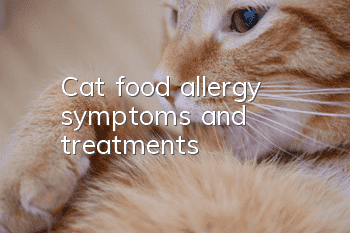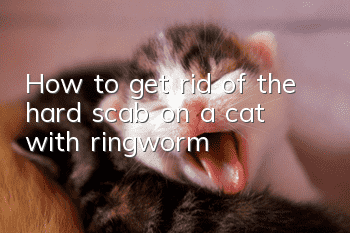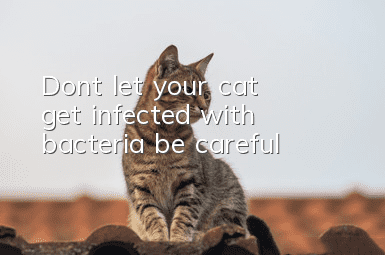Cat food allergy symptoms and treatments

Cats are very different from us humans in terms of diet, because there are many foods that cats cannot eat, so when we take care of cats, we should also pay attention to the impact of those foods on the health of cats. When raising them We also try to avoid things that cause cat allergies. So what should we do if a cat has a food allergy? This is what we need to understand.
Cause: The cat has ingested foods that can cause allergic reactions, such as milk, animal foods, and certain grains.
Symptoms: In the gastric type, vomiting and diarrhea immediately after ingestion can be seen, and the stool is watery and sometimes bloody; in the skin type, dry skin, rough coat, papules appear on the skin, and itching and rubbing of the eyes, nose, and face can cause localized Bleeding from skin lesions; digestive and skin symptoms, weight loss, and dehydration seen in mixed forms.
Diagnosis: In addition to the above symptoms, diet testing can also be used, that is, feeding the cat less irritating food (such as mutton or rice) and observing whether the allergic symptoms are relieved to eliminate the possibility of the disease caused by environmental factors. At the same time, Foods that cause the disease can also be identified.
Treatment:
1. Immediately stop feeding the food that causes allergies.
2. Take diphenhydramine or chlorpheniramine orally.
3. Take dexamethasone orally or intramuscularly.
Prevention: Cat owners should always observe the cat’s feeding and post-feeding conditions. If the cat is found to be allergic to a certain food, he should stop feeding that food in time and switch to other foods.
- How to train a cat not to go to bed How to train a cat not to go to bed
- Symptoms and treatment of alopecia areata in cats
- Can cats eat mutton?
- Can Persian cats and blue cats mate together? Cross-breed mating is not recommended!
- Are the 25 colors of gold gradient the least valuable?
- What is the process for buying a cat from a cattery? What should you pay attention to when buying a cat from a cattery?
- What to do if your cat has pica
- Is it necessary to undergo six biochemical tests to sterilize a male cat?
- What should I do if my cat is infected with ear mites? Teach you how to treat ear mites in cats
- Feline Gingivitis: Treatment and Prevention



